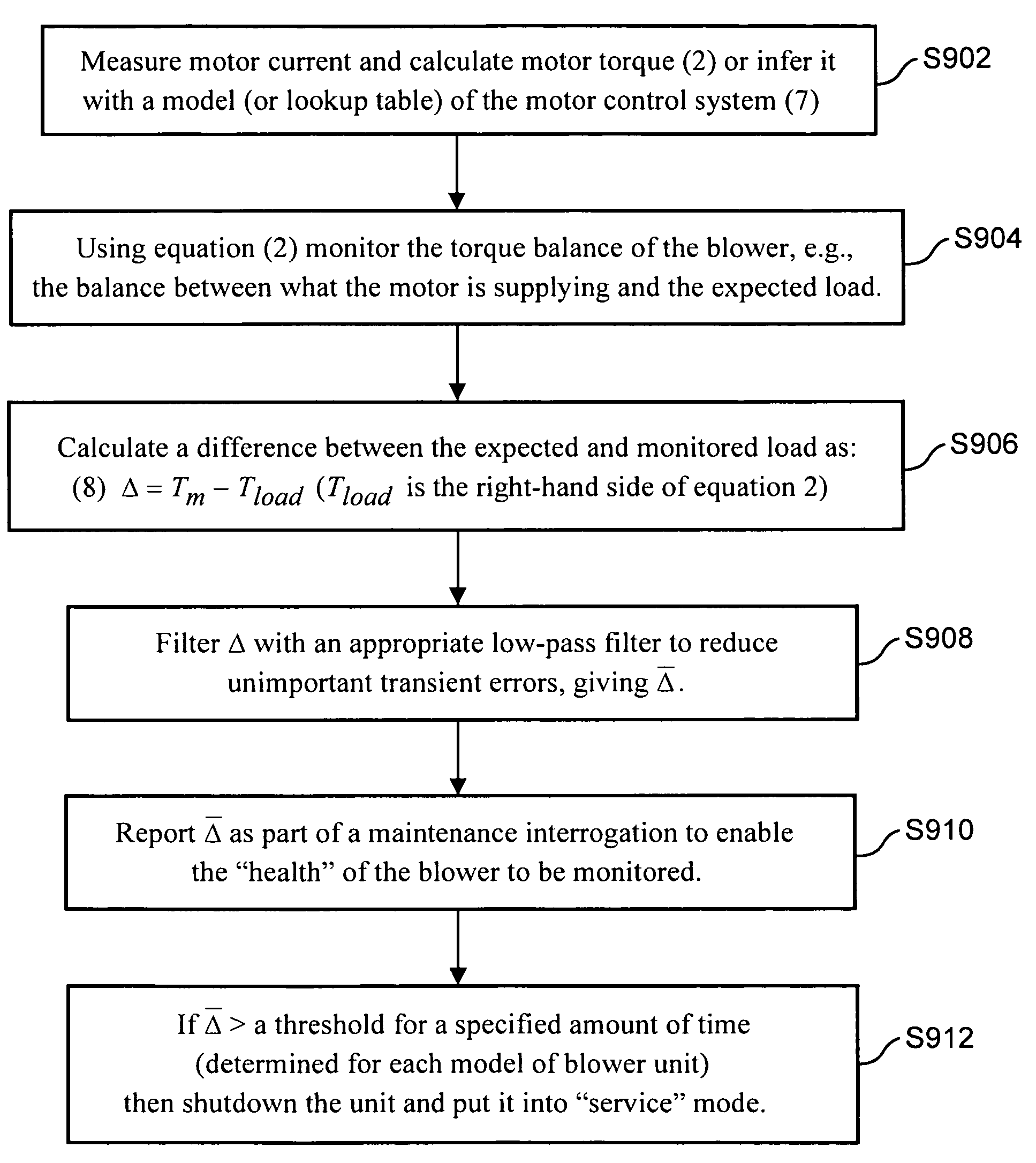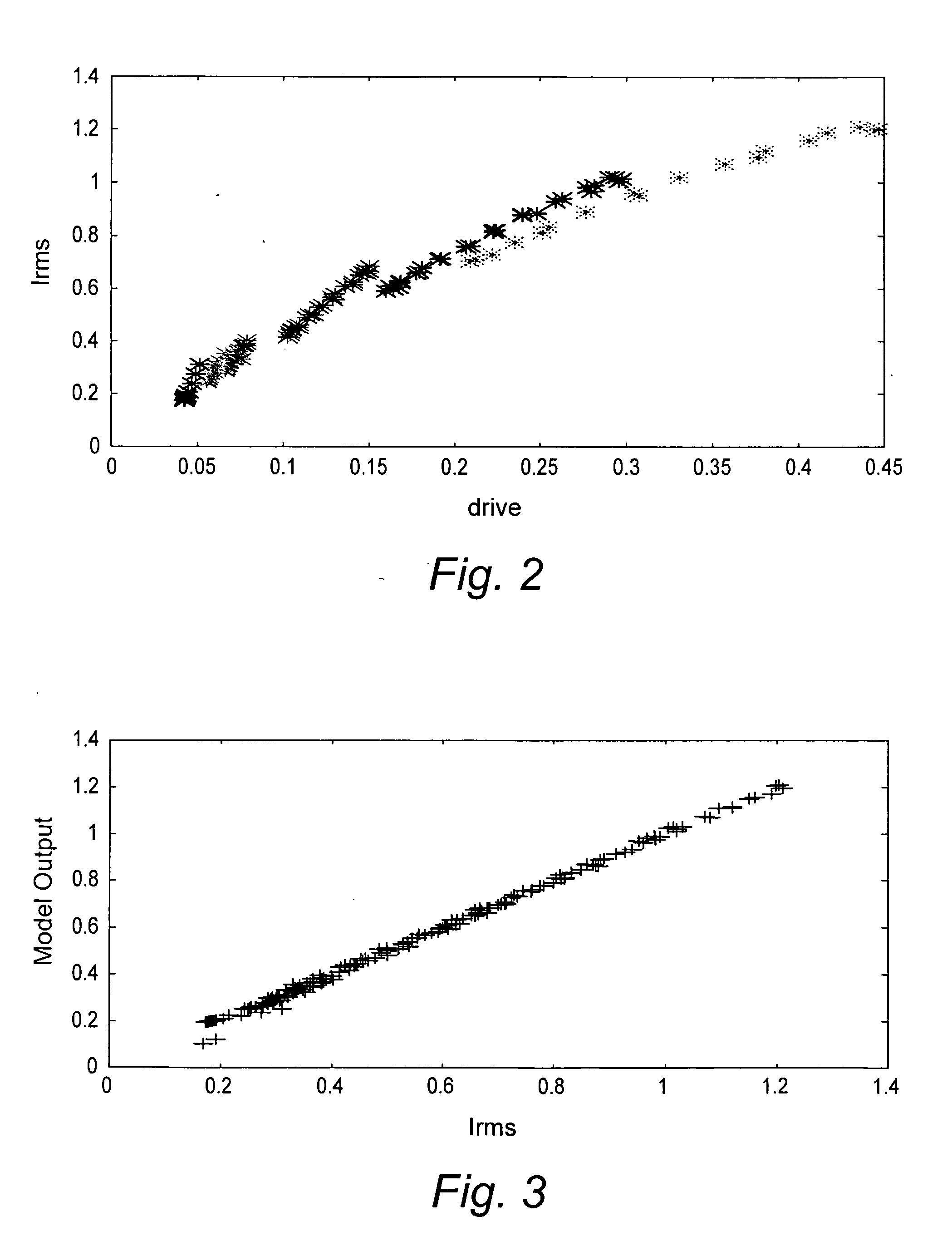Method and system for motor failure detection
- Summary
- Abstract
- Description
- Claims
- Application Information
AI Technical Summary
Benefits of technology
Problems solved by technology
Method used
Image
Examples
Embodiment Construction
1. Fault Detection
[0027]Certain example embodiments relate to techniques for detecting developing faults in flow generators. This may be made possible by calculating the difference between the expected and monitored load torques of a flow generator. The difference, filtered or unfiltered, may be compared to one or more predetermined thresholds (e.g., over a period of time) to determine whether a gross fault has occurred and / or whether a fault is developing. The following sections detail illustrative equations and illustrative hardware / software configurations that may be used in conjunction with this approach.
[0028]1.1 Model Overview
[0029]The blower is powered by a motor 2 that delivers a torque to the impeller 1 which accelerates the delivered fluid. At any point in time, there will be a balance between the torque developed by the motor and the torque required for accelerating the fluid, accelerating the mass of the impeller and motor rotor, and any losses in the system. It will be ...
PUM
 Login to View More
Login to View More Abstract
Description
Claims
Application Information
 Login to View More
Login to View More - R&D
- Intellectual Property
- Life Sciences
- Materials
- Tech Scout
- Unparalleled Data Quality
- Higher Quality Content
- 60% Fewer Hallucinations
Browse by: Latest US Patents, China's latest patents, Technical Efficacy Thesaurus, Application Domain, Technology Topic, Popular Technical Reports.
© 2025 PatSnap. All rights reserved.Legal|Privacy policy|Modern Slavery Act Transparency Statement|Sitemap|About US| Contact US: help@patsnap.com



